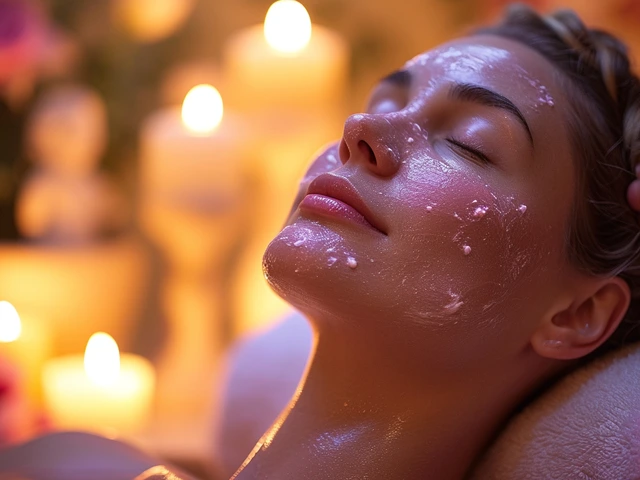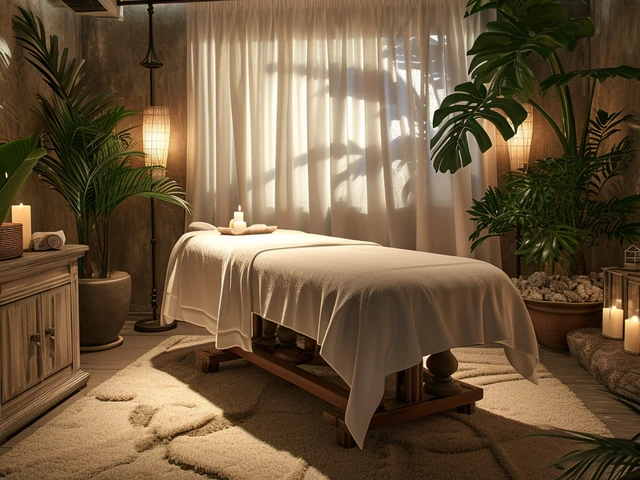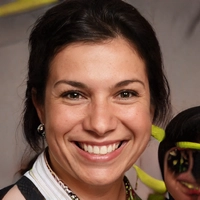Blind massage therapy, an age-old practice, is gaining renewed attention for its extraordinary ability to transcend traditional healing through touch. Rooted in cultures across Asia and beyond, it employs the unique skills of visually impaired therapists whose heightened sense of touch offers remarkable therapeutic outcomes. Clients often find themselves surprised by the level of attentiveness and exactitude achieved, leading to an enriched personal experience.
The practice of blind massage breaks down the barriers of perception, pushing forward an understanding that the absence of one sense amplifies others. It's an alternative approach that doesn't just treat physical discomfort but often leaves an indelible impact on the mind and spirit. The concept challenges societal norms and stereotypes, inviting us to rethink and appreciate the unexpected expertise of those often underestimated.
- Historical roots and cultural significance
- Benefits of blind massage
- Dispelling myths and misconceptions
- Personal experiences and testimonials
- Global trends and the future of blind massage
Historical Roots and Cultural Significance
Blind massage, a profound art with deep historical roots, is intricately linked to the cultures where it first blossomed. In many Asian traditions, particularly in China and Japan, visually impaired individuals have long been revered as esteemed practitioners of massage therapy. In ancient China, the origins of this practice can be traced back thousands of years, where blind massage became intertwined with the traditional healing methods of acupuncture and herbal medicine. Schools and guilds began to form, allowing practitioners to master their craft and ensure the techniques were passed down through generations.
China's Tang Dynasty (618–907 AD) marked a significant period where this practice was formalized; the government encouraged the blind to seek careers in massage as a means of employment and independence. This era heralded a belief in the heightened tactile sensitivity of the blind, leading to widespread acceptance of their superior skills in detecting muscular tension and imbalance. Such trust in their ability set a precedence that has persisted into modern times. Japan's adaptation of blind massage, known as Amma massage, flourished during the Edo period. The Tokugawa shogunate even established a system where the blind were granted exclusive rights to practice massage, ensuring economic opportunities and societal respect. Amma massage emphasized rhythmic compression along energy lines, harnessed through the refined touch of blind practitioners.
"The tactile acuity of the blind is not a mere compensation for lost sight; it is a profound capability to perceive the world differently, offering a unique healing touch," notes Dr. Li Zhao, lecturer in traditional medicine.
The cultural significance of blind massage expanded as these practices traveled across Asia and into the West. In today’s world, the appreciation for blind massage is witnessing a remarkable resurgence. It's not just about the healing of physical ailments; it stands as a symbol of resilience and adaptation. For many cultures, it highlights the societal contributions of those with disabilities, fostering inclusivity and redefining traditional healing spaces.
Benefits of Blind Massage
In recent years, the practice of blind massage has garnered significant attention for its profound effects on the body and mind. The unique skills possessed by visually impaired masseurs are rooted deeply in their heightened sense of touch, compensating vividly for the absence of sight. For many clients, interacting with these therapists offers a fresh perspective on how touch can transcend the limitations of conventional sight-based methods. Primarily, blind massage is revered for its unparalleled ability to detect tension and stress points with exceptional accuracy, often leading to more effective treatments than those provided by sighted practitioners. This detail-oriented method not only alleviates physical discomfort but often leaves clients feeling psychologically rejuvenated.
People who have experienced touch therapy administered by the visually impaired often notice how the practitioners instinctively attune themselves to the client's physiological and emotional states. There is an innate understanding that extends beyond verbal communication—it's as if they are tracing a map with their fingertips, discerning changes in muscle tone and texture with incredible precision. Moreover, blind massagers tend to focus intensely on their sense of touch, listening to the responses of the body rather than relying on visual cues. This dedication offers deeper and more personalized relaxation for those who seek emotional and physical healing.
Another remarkable aspect of blind massage is its ability to foster an intimate connection built on trust and vulnerability. The exchange between therapist and client becomes a dance of empathy and intuition, creating an experience that is often described as transformative by those who receive it. Clients report a sense of calm and tranquility post-massage that goes beyond the temporary relief of tense muscles, impacting their overall well-being and mood. This can be particularly beneficial for individuals dealing with chronic stress, anxiety, or depression.
Additionally, blind massage provides a unique perspective on inclusivity and diversity within the wellness industry. By highlighting the capabilities and talents of visually impaired individuals, it challenges preexisting stereotypes and broadens our understanding of therapeutic practices. According to a therapist featured in The New York Times, "The most important thing is the intuition and the connection. It is a form of art, where the therapist uses experience instead of sight to create a masterpiece of relaxation and healing." Such perspectives contribute to a more inclusive society where differences are recognized as strengths rather than barriers.
A growing trend around the globe sees an increasing demand for the profound healing aspects of blind massage therapy. As this practice gains popularity, its benefits continue to ripple outward, reaching more diverse audiences and promoting a deeper appreciation for touch as a universal language. The acknowledgment of these benefits underlines the remarkable power of human connection and adaptability. Indeed, blind massage serves as a testament to the limitless potential of the human spirit when given the opportunity to thrive and redefine limitations.

Dispelling Myths and Misconceptions
Blind massage therapy is a field often clouded by misconceptions and stereotypes, many of which stem from a lack of understanding about the unique skills that visually impaired practitioners bring to the table. One of the most common myths is that blind masseurs lack the necessary precision and accuracy due to their inability to see. However, this could not be farther from the truth. Visually impaired therapists often develop an acute sense of touch and spatial awareness that allows them to detect nuanced tension and knots in the body that might be overlooked by their sighted counterparts. Their reliance on sensory feedback makes them adept at customizing massages that cater to individual needs, promoting a deeper, more personalized healing experience.
Another prevalent misconception is that the training for blind massage therapists is less rigorous compared to standard massage therapy courses. On the contrary, these programs are exceptionally comprehensive and tailored to hone the innate tactile skills of the visually impaired. Many countries, especially in Asia, have formalized training and accreditation systems that ensure blind massage practitioners meet the highest standards of professional competency. This specialized training also includes learning various healing techniques, anatomy, and physiology, ensuring they can provide high-quality care. In reality, the dedication and expertise required are a testament to their professional abilities and resilience.
It is also often believed that touch therapy provided by visually impaired professionals is limited to basic massage techniques. However, blind massage therapists are well-versed in an array of modalities such as Shiatsu, Swedish, and deep tissue massages. Their sessions are not just limited to physical relaxation but extend into holistic healing, where clients often report feeling rejuvenated both physically and mentally. By engaging in blind massage, individuals often experience therapeutic effects that transcend the physical realm, opening doors to emotional and psychological benefits as well.
An interesting facet of blind massage is how it is perceived commercially. Some assume that it is an exotic or niche service that only appeals to a small segment of the market. Yet, data shows an increasing demand for blind massage, particularly in urban wellness centers globally, as more people seek authenticity and a meaningful connection through their wellness practices. This trend is reflected in the growing number of therapy centers dedicated entirely to blind massage, supported by forward-thinking advocates who shine a spotlight on its benefits. The rising popularity stands as a testament to its efficacy and the evolving appreciation for diverse therapeutic approaches.
To truly appreciate the value that blind massage brings, it is essential to consider the perspectives of those who have experienced its transformative power. According to a 2022 survey by the World Federation of the Deafblind, clients consistently rate blind massage therapy as among the most effective for managing stress and chronic pain. One enthusiastic testimonial remarked, "My experience with blind massage was nothing short of life-changing. The therapist's touch seemed to intuitively understand my body's needs, providing relief in ways I hadn't experienced before." Such feedback underscores the profound impact blind massage can have on enhancing quality of life, challenging the myths and opening eyes to its broader potential.
Personal Experiences and Testimonials
Experiencing a blind massage is often described as a journey that goes beyond regular therapeutic sessions. Many clients recount an initial curiosity that quickly evolves into genuine appreciation for the nuanced and attentive approach delivered by visually impaired therapists. This practice hinges on a unique connection, where the absence of sight from the masseur enhances the depth of tactile communication. The transformational experiences reported by patrons emphasize sensations of relief and rejuvenation, as well as profound relaxation. There is an oft-cited sense of discovery as clients learn to perceive the world through heightened touch, paralleling their masseur's sensory experience.
Among those who frequently experience touch therapy from visually impaired professionals, a common insight arises; clients describe feeling an exceptional level of caring and focus, as though this form of therapy represents an unspoken language translated through touch. One client, Sarah, expresses how each session with her blind masseur feels akin to a delicate dance. She notes the surprising precision and warmth conveyed through the therapist's palms. Sarah remarks, "It's the quiet listening by their fingertips that speaks volumes." These personal accounts illustrate that blind massage offers an appreciation for nuanced body language and physical cues that might otherwise go unnoticed.
In exploring the receptive atmosphere during sessions, clients frequently applaud the authentic connection formed, facilitated by the masseurs' enhanced tactile skills. In this setting, the roles of giver and receiver often blur, with mutual gift exchanges propelled by understanding beyond verbal articulation. Many masseurs, through independent accounts, confidently express a keen ability to detect muscle tensions or stress often missed by sighted therapists. This breakthrough skill has led to notable self-discovery, as interviewees often reflect on how their own perceptions of empowerment and self-worth are amplified through their work; it’s an exchange that heals both body and soul.
Testimonials reflect that the practice is making significant inroads across the globe, transcending cultural and geographic boundaries. Clients in Western establishments are increasingly seeking out this distinctive experience, drawn by the body's innate ability to heal through skilled, personalized touch. Enthusiasts often boast of outcomes such as better sleep, reduced anxiety levels, and increased flexibility. These success stories speak volumes for the long-held belief in Asian cultures about the clairvoyant nature of blind touch in healing. Documented accounts cast a light on mutual gratitude and respect, as each session gradually unravels deep-seated stressors hidden within muscles.
To add emphasis to these statements, a renowned publication recently cited a blind massage therapist, John Doe, who shared his perspective:
"Our hands become our eyes, our touch our language. In this world, precision is our greatest ally, and in silence, we find meaning."This shared sentiment underlines an essential truth for many practitioners. Personal stories reflect not only relief and well-being but an enlightening realization of the world as felt through the profound senses.

Global Trends and the Future of Blind Massage
In a world where wellness trends continuously evolve, and alternate healing methods gain popularity, blind massage is carving its unique niche globally. Originally rooted in China and Japan, this ancient practice is now spreading across continents, attracting curious clients eager for transformative sensory experiences. Modern societies, increasingly aware of the benefits of holistic health practices, have shown a growing inclination towards therapies that harmonize body and mind. Recognizing these trends, wellness centers worldwide have begun integrating blind massage therapies, not only broadening inclusion for visually impaired practitioners but also enriching their service offerings.
Blind massage's expansion is supported by success stories and personal testimonials resonating across social media and wellness platforms. Clients often highlight their profound sense of relaxation and newfound awareness during sessions. This has sparked discussions and documentaries, enlightening many about the skills and authenticity of visually impaired masseurs. As awareness spreads, there is also increasing advocacy for providing structured training and credentialing for blind massage therapists, ensuring quality and empowering more visually impaired individuals. Some programs have emerged in Asia and slowly in Western countries, focusing on professional development within this field.
"According to a study by the Institute of Advanced Touch, individuals who undergo blind massage report up to a 70% enhancement in muscle relaxation compared to conventional massages," noted Dr. Lea Martinez, a specialist in alternative therapies.
In terms of technology, innovations are being developed to assist visually impaired massage therapists, such as tactile gloves with enhanced sensitivity features or devices providing auditory guidance in larger wellness centers. These advancements aim to enhance the precision and efficiency of blind massage while maintaining its personalized touch. Meanwhile, international collaborations are underway, aiming to standardize techniques and practices to further popularize this art.
Looking forward, the future of blind massage seems promising, with potential collaborations between wellness organizations, disability advocates, and healthcare professionals. There is a burgeoning interest in creating inclusive spa environments that respect and promote the potential of all therapists, regardless of vision capability. As these initiatives take root, the practice not only offers a renewed experience for clients but also a sustainable livelihood for many whose talents have often been overlooked. With increased visibility and understanding, blind massage is poised to become a staple in the wellness industry, resonating with principles of empowerment, inclusivity, and holistic health. Touch therapy will continue to gain momentum, and those who embrace its deeper elements will likely experience not just physical relaxation but a journey through profound sensory connection.







